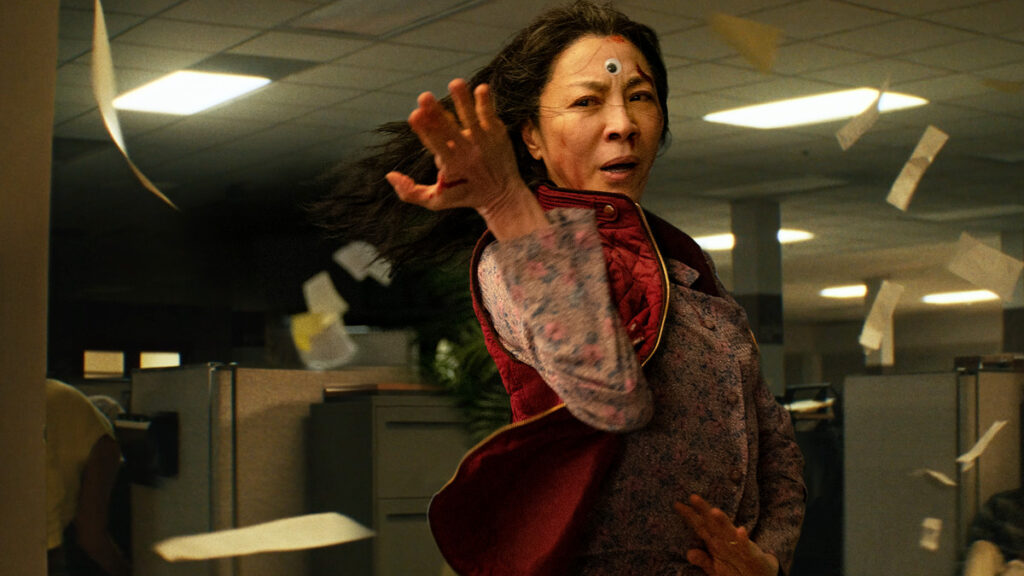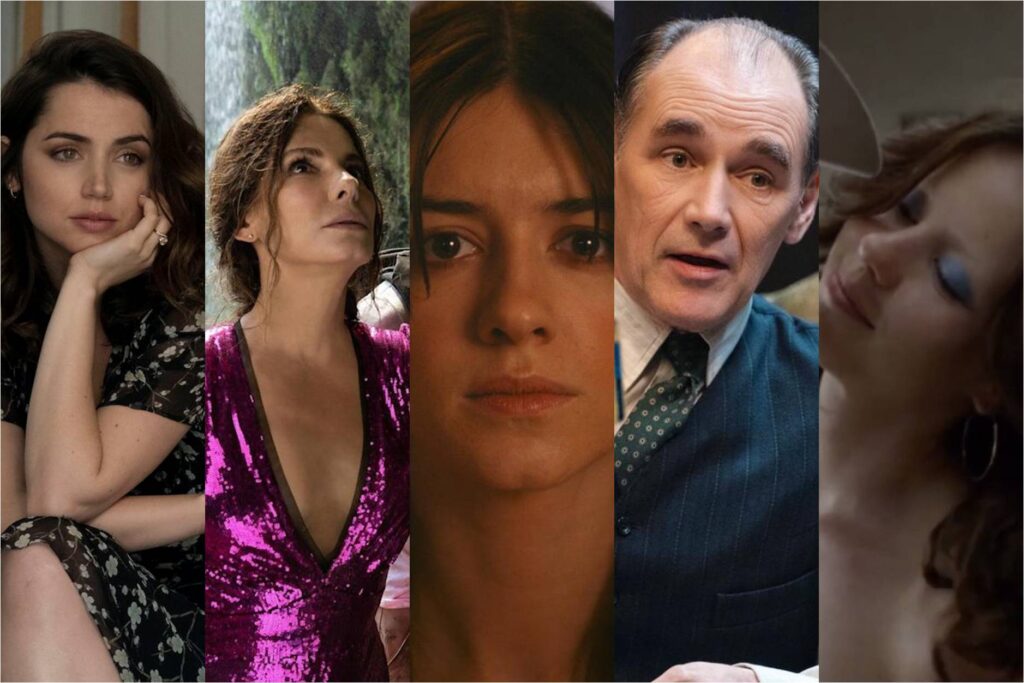Everything Everywhere All at Once: In the Multiverse of Radness

Among the innumerable genres represented in Everything Everywhere All at Once—the universe-hopping, tone-mutating, brain-scrambling whatsit from Daniel Kwan and Daniel Scheinert (collectively known as Daniels)—is the martial-arts instruction picture. Like Ralph Macchio in The Karate Kid and Uma Thurman in Kill Bill, its protagonist receives tutelage from a wiser, more experienced combat veteran. But here, rather than preaching about the virtues of discipline or the importance of practice, the seasoned mentor encourages our hero to weaponize absurdity. “The less sense it makes,” he insists, “the better.”
This is a matter of opinion, at least when it comes to movies. At the cinema, the twin values of logic and imagination are often in tension with one another, resulting in an artistic seesaw in which adding weight to one sacrifices the other. The brilliance of Everything Everywhere All at Once isn’t that it strikes the perfect balance between these qualities but that it loads up so heavily on one as to render the other irrelevant. Here is a work of bold, boisterous originality, teeming with rich ideas and vivid images and the quixotic thrill of genuine inspiration. It isn’t better because it doesn’t make sense. It’s better because it redefines the concept of making sense entirely. Read More




